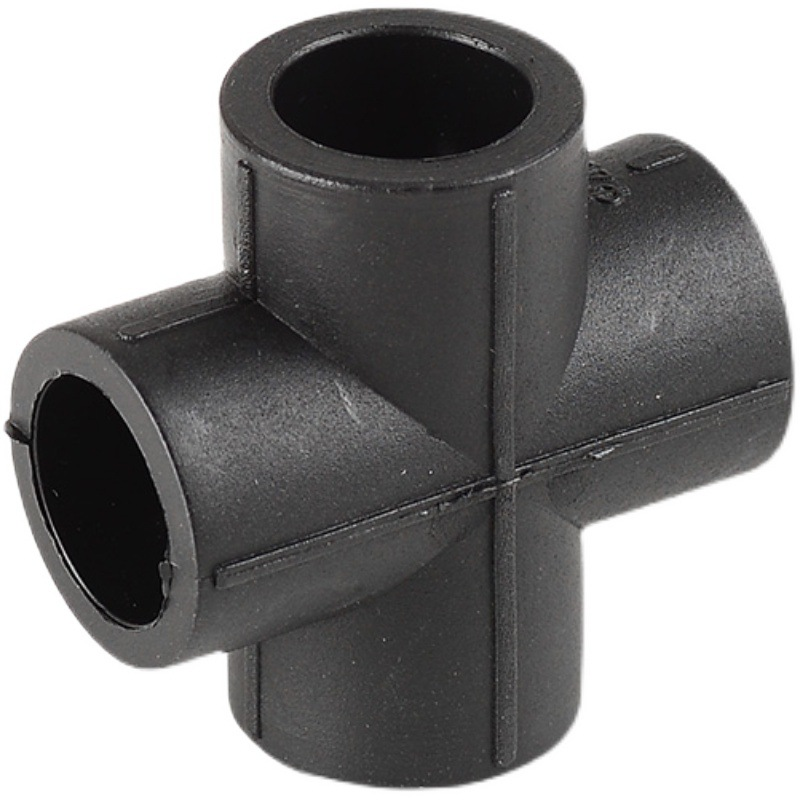The ideal choice for leak-free, corrosion-resistant connection solutions------HDPE equal diameter cross fittings
2025-08-05
High-density polyethylene (HDPE) pipe fittings play an increasingly important role in modern piping systems. HDPE, or high-density polyethylene, is a thermoplastic polyolefin formed by the copolymerization of ethylene. Due to its unique molecular structure, HDPE possesses exceptional properties, making it an ideal alternative to traditional pipe fittings.
HDPE pipe fittings offer significant advantages in terms of product properties. They offer excellent corrosion resistance, resisting attack by a wide range of chemicals. They ensure long-term, stable operation in acidic and alkaline environments, as well as in complex media such as industrial wastewater and seawater. For example, in pipeline installations within chemical parks, HDPE fittings withstand the effects of highly corrosive chemicals, significantly reducing the risk of corrosion-related leaks and maintenance costs compared to metal fittings. The material itself offers excellent flexibility and impact resistance. It resists rupture in the event of geological disasters such as earthquakes and ground subsidence, as well as everyday mechanical vibration, effectively safeguarding the integrity of the piping system. This characteristic is particularly crucial in water supply and drainage systems in earthquake-prone areas, providing a solid foundation for the safe operation of urban infrastructure. Convenient installation is also a major advantage of HDPE equal-diameter cross fittings. Butt fusion or electric fusion makes pipe connection relatively simple, improving construction efficiency, shortening construction periods, and reducing labor costs. For example, in municipal water supply and drainage projects, this efficient installation method enables construction teams to complete pipe laying tasks more quickly, minimizing the impact on urban traffic and residents' lives.
Looking ahead, the market prospects for HDPE equal-diameter cross-way pipe fittings remain promising. On the one hand, the deepening urbanization and industrialization in emerging markets will continue to unleash demand for infrastructure construction, driving market demand for pipe fittings. On the other hand, with the continuous advancement of technology, HDPE equal-diameter cross-way pipe fittings will develop towards high performance and intelligent features. For example, the development of self-monitoring pipe fittings can sense internal pipeline parameters such as pressure, temperature, and flow in real time, promptly identifying potential faults and hidden dangers, and enhancing the intelligent management of pipeline systems. At the same time, companies will continue to optimize production processes, reduce production costs, and improve product quality to cope with increasingly fierce market competition and seize a larger share of the global market.






